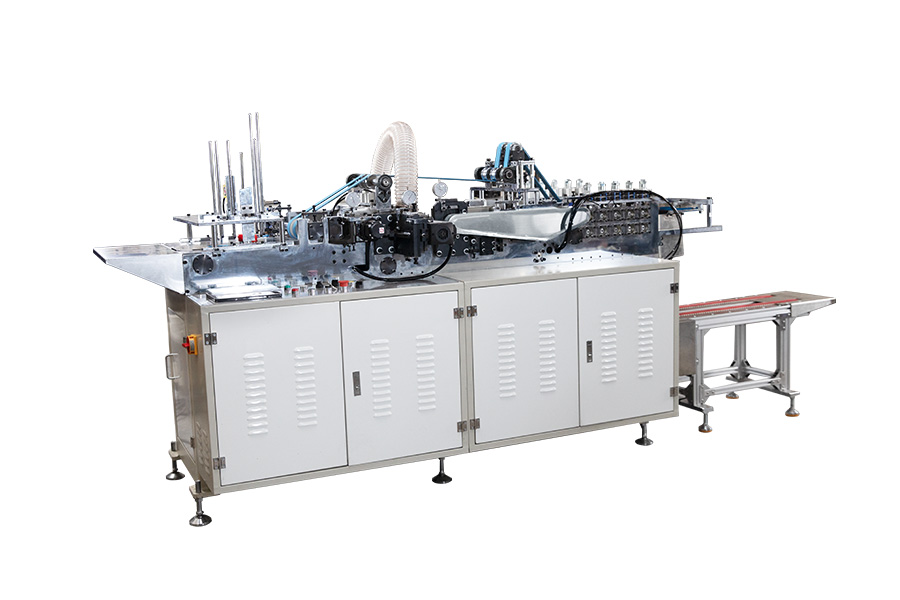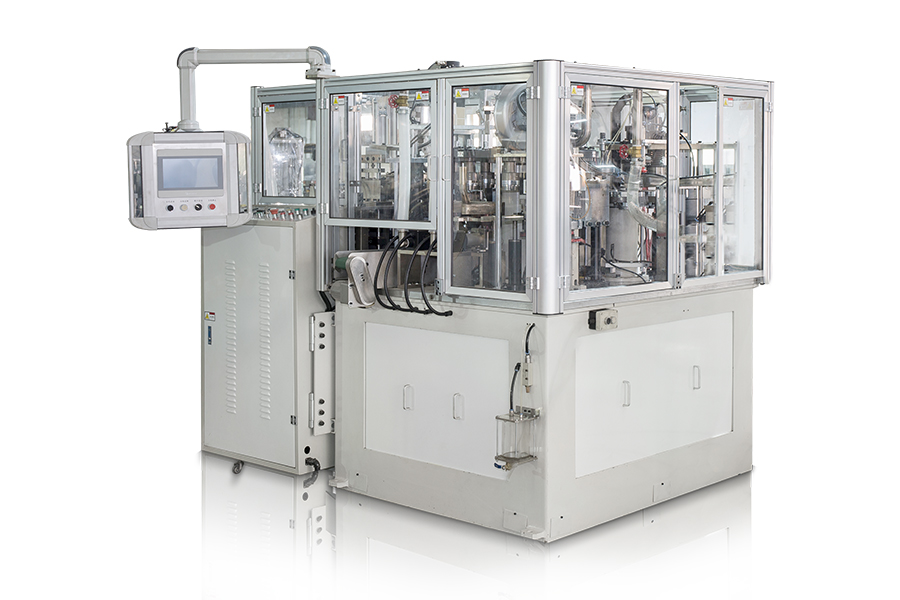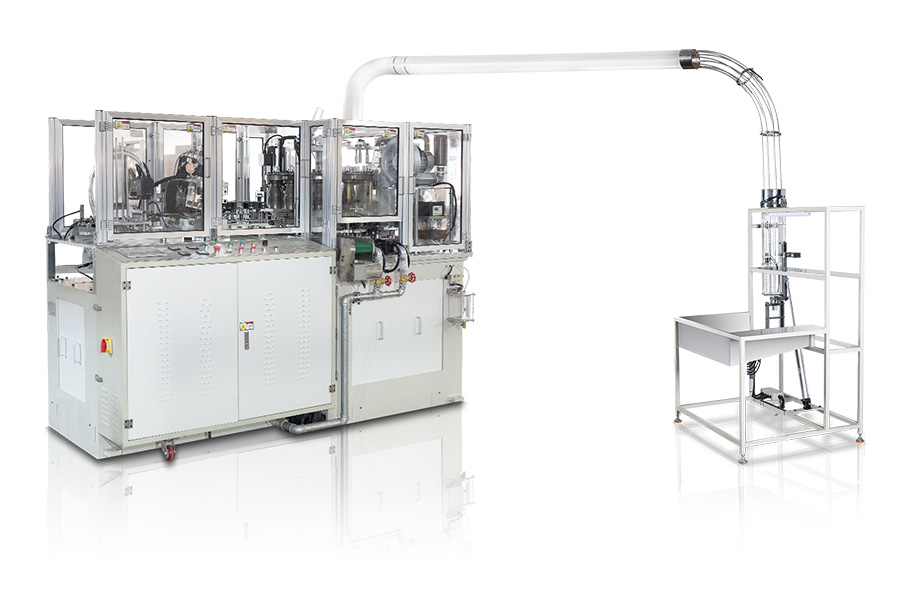In today's industrial manufacturing field, double-wall molding machine, as a highly efficient and precise professional equipment, is providing innovative production solutions for multiple industries. This advanced equipment can produce various products with double-wall structure through a unique molding process, which not only improves the physical properties of the product, but also brings more possibilities for product design. The core value of double-wall molding technology lies in its ability to meet the dual needs of structural strength and functionality at the same time, so that the final product has better insulation, sound insulation, shock absorption and other characteristics, and plays an irreplaceable role in packaging, construction, automobile manufacturing and other industries.
The working principle of the double-wall molding machine is mainly based on precision thermoforming or injection molding technology. The equipment forms a specific double-layer structure of the raw materials in the mold through a precisely controlled temperature system and pressure system. During the molding process, the inner and outer walls can be molded synchronously or in steps, depending on the specific product requirements and material characteristics. The intelligent control system equipped with the equipment can accurately adjust key parameters such as molding temperature, pressure and time to ensure the quality stability of each product. For the processing of different materials, such as plastics, composite materials or special alloys, the equipment can achieve the best molding effect through parameter adjustment.
From the perspective of equipment structure, modern double-wall molding machines usually work together with multiple precision systems. The core mold system adopts a special design to achieve precise molding of complex double-layer structures; the temperature control system ensures that the material is shaped in the best condition; the automatic feeding and picking device greatly improves production efficiency. Advanced models are also equipped with a real-time monitoring system that can dynamically adjust various parameters during the molding process to ensure the consistency of product quality. Some high-end equipment also integrates subsequent trimming, testing and other processes to form a complete production line.
This type of equipment has shown significant advantages in the packaging industry, especially in the food packaging and pharmaceutical packaging fields that require high thermal insulation performance. Through the double-wall structure design, the product can obtain better temperature retention ability while reducing the overall weight. In the construction industry, the building materials produced by the double-wall molding machine have both structural strength and thermal insulation performance, providing an ideal material solution for green buildings. The automotive manufacturing industry uses this equipment to produce lightweight parts, effectively reducing the weight of the body while ensuring strength and improving fuel efficiency.
The continuous innovation of double-wall molding technology drives the continuous improvement of equipment performance. The latest generation of equipment has made significant progress in energy efficiency, significantly reducing energy consumption by optimizing the heating system and recycling waste heat. The increased intelligence enables the equipment to automatically identify material properties and adjust process parameters, reducing human intervention. Some innovative equipment has begun to try to combine 3D printing technology with traditional molding processes, opening up new ways to manufacture complex structural products.
In terms of equipment selection and use, several key factors need to be considered. The characteristics of the molding material determine the equipment temperature range and the configuration requirements of the pressure system; the product size and structural complexity affect the design of the mold system; the production batch size is related to the choice of automation. In terms of daily maintenance, it is necessary to regularly check the operating status of the heating system, hydraulic system and control system, and replace wearing parts in time to ensure long-term and stable operation of the equipment. Professional training of operators is also crucial. The correct operation method can not only ensure product quality, but also extend the service life of the equipment.
As the manufacturing industry continues to increase its requirements for product performance, double-wall molding technology will continue to develop in a more precise and intelligent direction. The application of new materials will expand the processing range of equipment, and the introduction of Internet of Things technology will enable remote monitoring and predictive maintenance of equipment. In the future, this equipment is expected to be applied in more fields, providing more flexible and diverse production solutions for industrial manufacturing. Its unique technical advantages will surely promote product innovation and industrial upgrading in related industries.






 English
English عربى
عربى 中文简体
中文简体

















